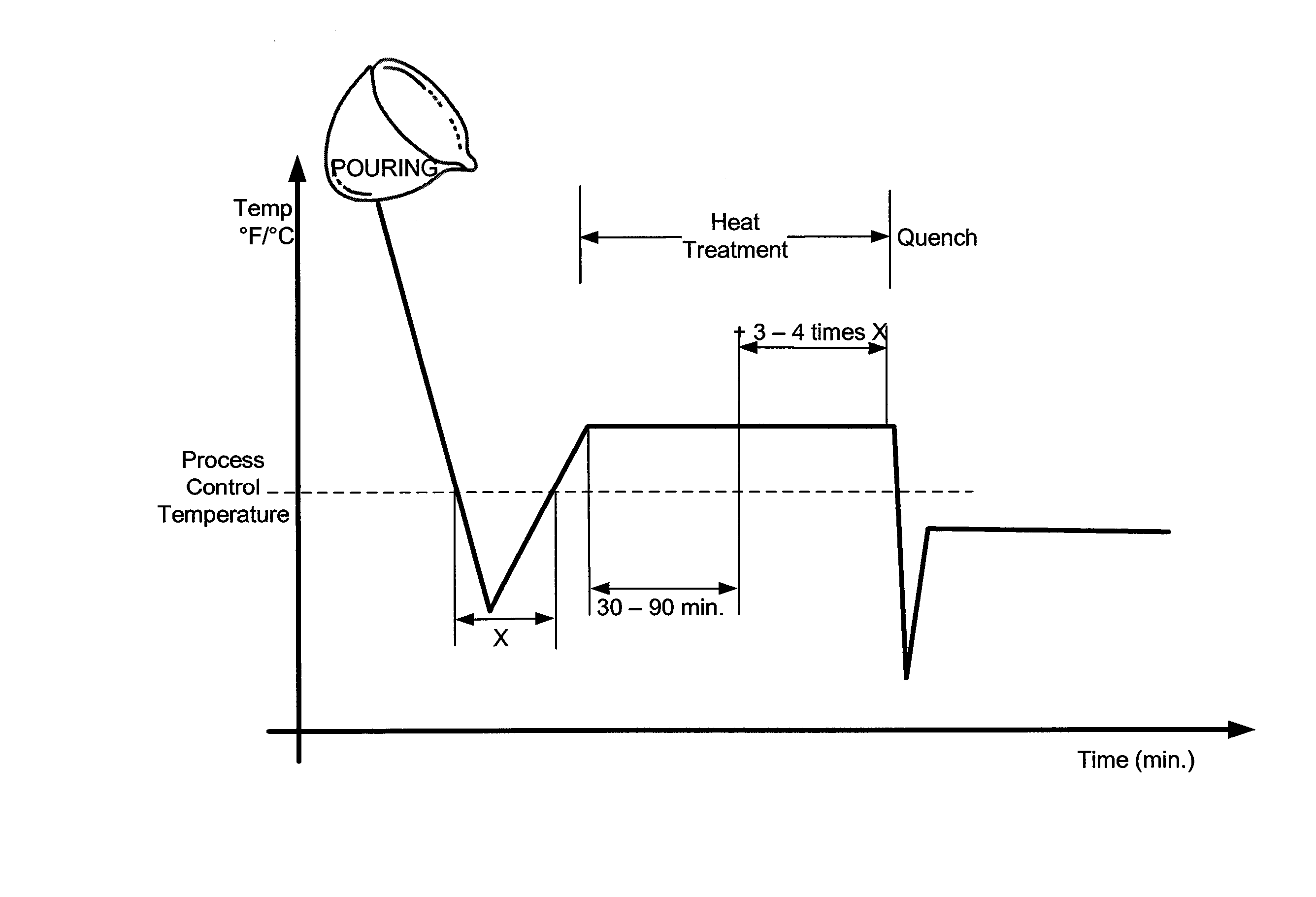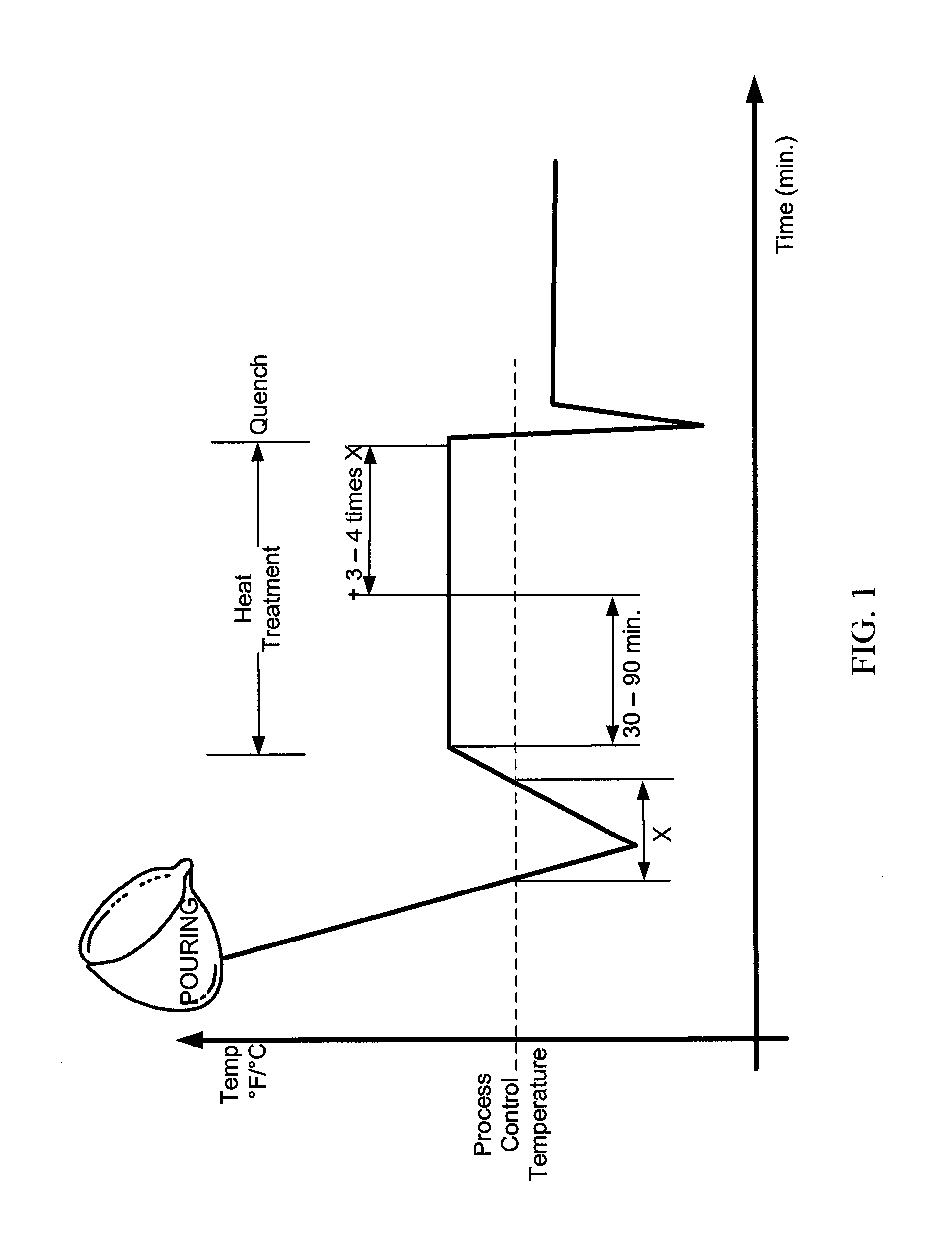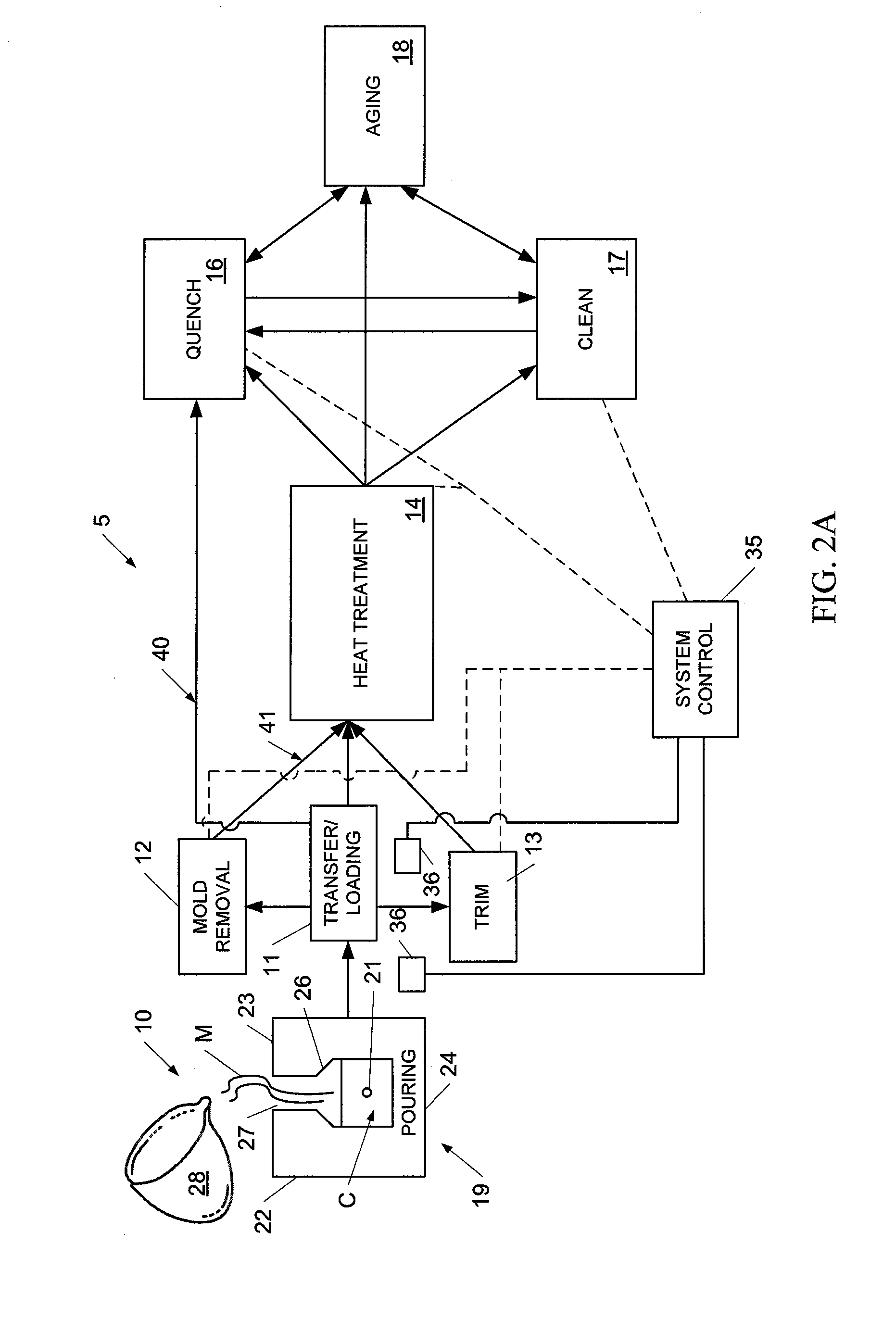Methods and system for manufacturing castings utilizing an automated flexible manufacturing system
a manufacturing system and flexible technology, applied in the direction of manufacturing tools, foundry patterns, casting moulding apparatus, etc., can solve the problems of increasing energy utilization, increasing the rate of ambient environment exposure of castings, and increasing the utilization of energy, so as to improve the rate of efficiency and facilitate the movement. , the effect of greater flexibility
- Summary
- Abstract
- Description
- Claims
- Application Information
AI Technical Summary
Benefits of technology
Problems solved by technology
Method used
Image
Examples
Embodiment Construction
[0020] Referring now in greater detail to the drawings in which like numerals refer to like parts throughout the several views, FIGS. 2A-2B schematically illustrate one exemplary embodiment of an integrated metal casting processing facility or system 5 including a series of casting processing stations, such as a pouring station 10, transfer / loading station 11, mold removal 12, trimming station 13, heat treatment station 14, a quench station 16, and cleaning and aging stations 17 and 18, for processing a series of castings C according to pre-programmed processing sequences or paths for such castings. Other, different processing stations, such as for machining, inspection, storage, and the like, also can be included in this casting processing system as will be understood by those skilled in the art. The present invention is directed to a system for controlling the movement of such castings between the pouring station and the various downstream casting processing stations 12-18 as need...
PUM
| Property | Measurement | Unit |
|---|---|---|
| temperatures | aaaaa | aaaaa |
| temperature | aaaaa | aaaaa |
| temperature | aaaaa | aaaaa |
Abstract
Description
Claims
Application Information
 Login to view more
Login to view more - R&D Engineer
- R&D Manager
- IP Professional
- Industry Leading Data Capabilities
- Powerful AI technology
- Patent DNA Extraction
Browse by: Latest US Patents, China's latest patents, Technical Efficacy Thesaurus, Application Domain, Technology Topic.
© 2024 PatSnap. All rights reserved.Legal|Privacy policy|Modern Slavery Act Transparency Statement|Sitemap



